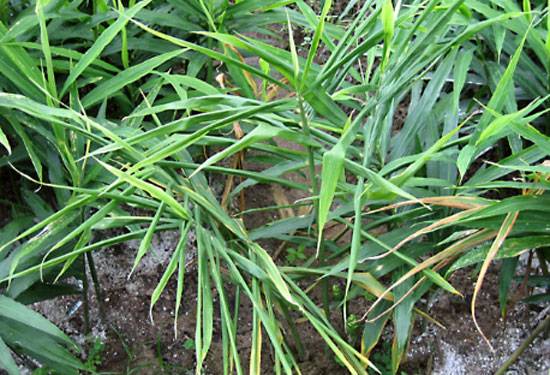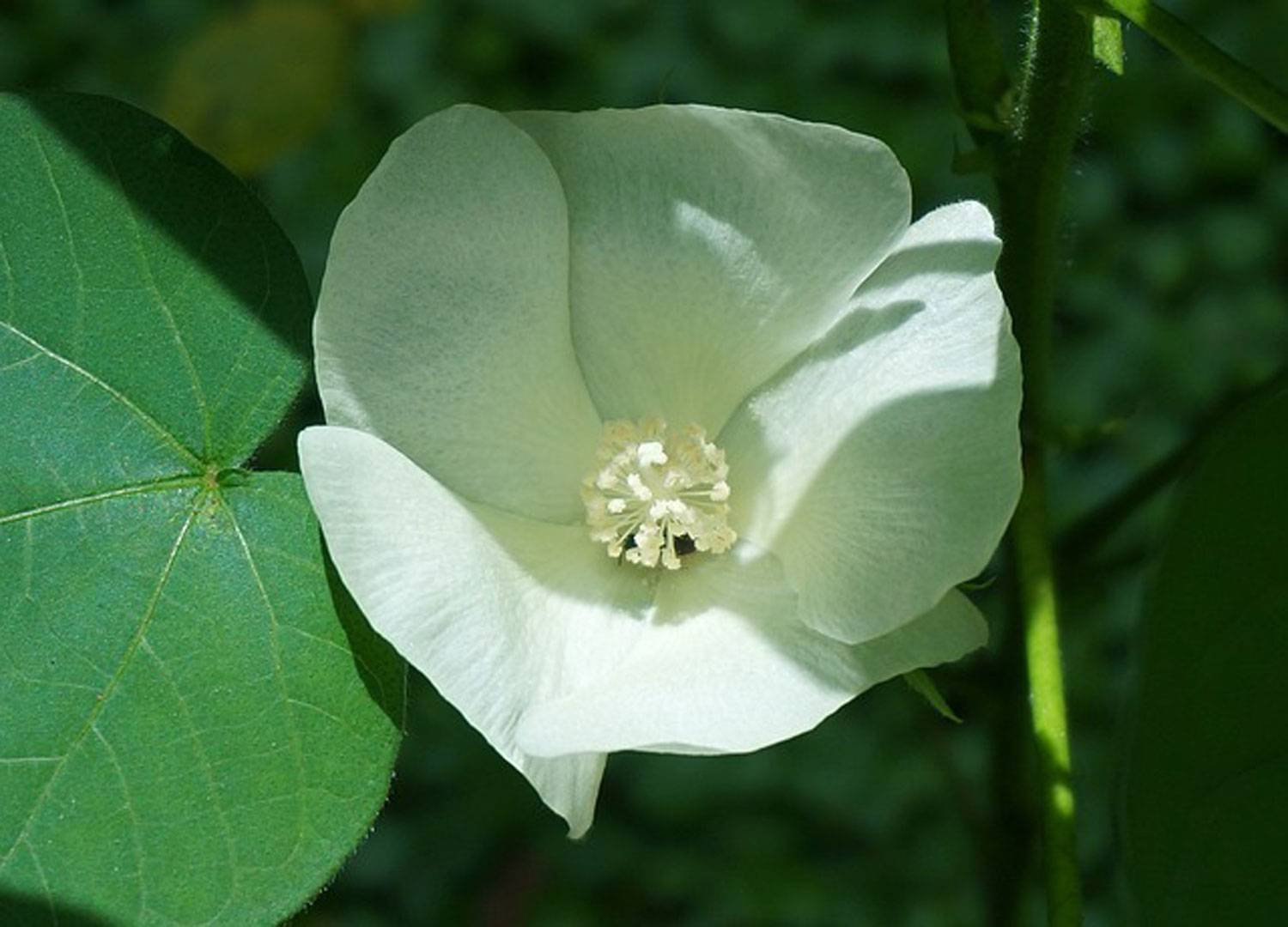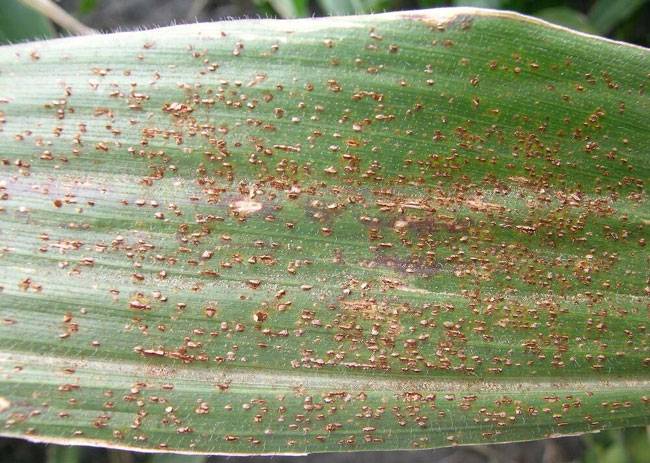Bacterial Wilt - Zinc and Water Management
Bacterial Wilt - Zinc and Water Management

Bacterial Wilt - Zinc and Water Management
Zinc (Zn) and water management play crucial roles in managing bacterial wilt in ginger caused by Ralstonia solanacearum. Here's how they contribute to disease management:
1. Role of Zinc in Bacterial Wilt Management
Zinc is an essential micronutrient for plants, playing key roles in enzyme function, protein synthesis, and immune response. Its involvement in managing bacterial wilt can be understood in several ways:
Enhanced Plant Resistance: Zinc boosts the plant's overall health and strengthens its natural defense mechanisms, making it less susceptible to bacterial wilt. Healthy plants are more capable of resisting pathogen attacks, including Ralstonia solanacearum. Zinc supports processes like:
- Cell Membrane Integrity: Zinc maintains cell membrane stability, reducing bacterial entry.
- Enzyme Activation: It activates antioxidant enzymes, which help mitigate oxidative stress caused by pathogen attacks.
Improved Root Growth and Function: Adequate zinc availability promotes healthy root development. Strong root systems help the plant access nutrients and water more effectively, reducing stress, which is important in managing wilt diseases.
Reduction of Pathogen Survival: Zinc may also directly reduce the survival of Ralstonia solanacearum in the soil. Zinc can suppress soil-borne pathogens by altering the soil microbial community and promoting beneficial microorganisms that compete with or inhibit the growth of harmful bacteria.
Zinc Application: Zinc can be applied as zinc sulfate (ZnSO₄) through soil amendments or foliar sprays. Maintaining adequate levels of zinc in the soil ensures plant health and disease resistance.
2. Water Management in Bacterial Wilt Management
Water management is a critical factor in controlling bacterial wilt in ginger. Since Ralstonia solanacearum thrives in waterlogged and poorly drained soils, proper water management can significantly reduce disease incidence.
Avoid Waterlogging: Ginger is highly sensitive to waterlogging, which creates anaerobic conditions that favor the multiplication and spread of Ralstonia solanacearum. Overwatering or poorly drained soils can exacerbate bacterial wilt. Key strategies include:
- Ensure Proper Drainage: Grow ginger on raised beds to improve soil drainage and prevent water accumulation around the roots.
- Use Well-Drained Soils: Select soils with good drainage properties, and avoid compacted or clay-heavy soils that retain excess water.
- Drip Irrigation: Employ drip irrigation systems to control water supply more precisely and avoid wetting the soil excessively. Drip systems provide just enough water directly to the root zone, minimizing the risk of waterlogging.
Maintain Optimal Soil Moisture: While avoiding excess water, it is also important to maintain consistent moisture levels in the soil. Drought stress weakens plants, making them more vulnerable to bacterial wilt. Properly managing soil moisture ensures the plant stays healthy and resilient against the disease.
Irrigation Water Quality: The use of contaminated water for irrigation can spread the bacterial pathogen. Water sources should be clean and free from bacterial contamination. Rainwater harvesting systems or treated water should be preferred in areas where water quality is a concern.
3. Combined Role of Zinc and Water Management
Integrated Approach: Combining proper zinc nutrition with effective water management creates an environment that reduces stress on ginger plants and limits the pathogen's ability to thrive. When plants are healthy and the soil is well-managed, the chances of bacterial wilt significantly decrease.
Soil Health Enhancement: Proper zinc levels combined with water management practices improve soil structure and microbial activity. Healthy soils, rich in beneficial microbes, can suppress the growth of pathogens like Ralstonia solanacearum. The microbial diversity can also be promoted by adding organic matter or biological controls, which, together with proper water and zinc management, create a robust disease control strategy.
4. Best Practices:
Zinc Supplementation:
- Conduct soil tests to assess zinc levels and apply zinc sulfate or chelated zinc based on recommendations.
- Use foliar sprays of zinc if deficiencies are detected during the growing season.
Water Management:
- Avoid overhead irrigation, which can increase soil moisture and splash the bacterium onto healthy plants.
- Regularly monitor soil moisture levels, particularly during rainy seasons or after heavy irrigation, and adjust irrigation schedules accordingly.
The roles of zinc and water management are integral in managing bacterial wilt in ginger. Zinc enhances the plant’s natural defenses and supports healthy root development, while proper water management reduces conditions favorable to bacterial growth. By maintaining optimal zinc levels and preventing waterlogging, farmers can significantly reduce the incidence of bacterial wilt in ginger fields. An integrated approach that combines nutrient management with precise water control offers the best chance for sustainable disease management.
Blog
Explore Our Blog






About Us
Welcome to Agriplaza
Welcome to Agriplaza. India's first and only comprehensive digital platform dedicated to agriculture and farmers. Explore widest range of related data our figures speaks a lot.
620477
Visitors
239
Diseases
131
Pests




